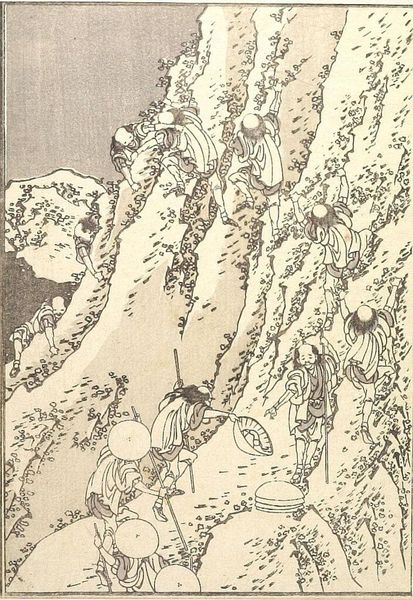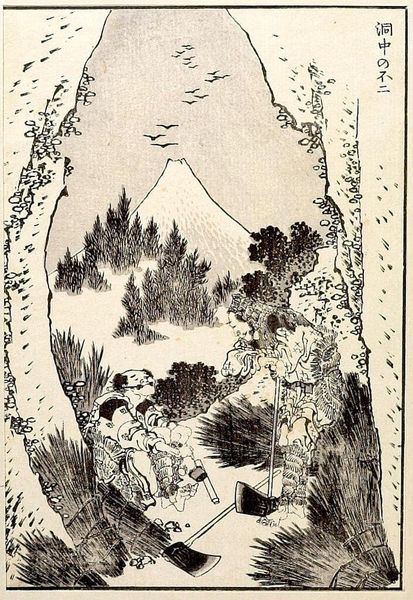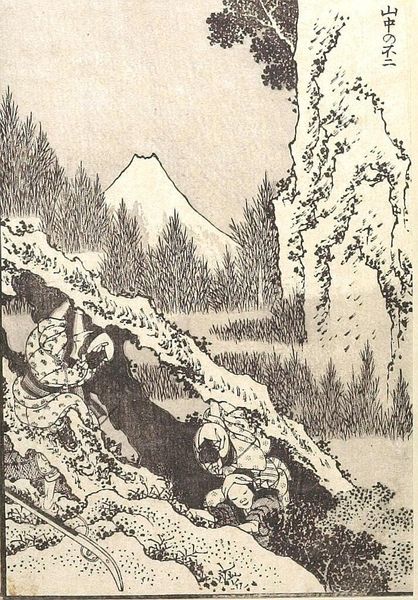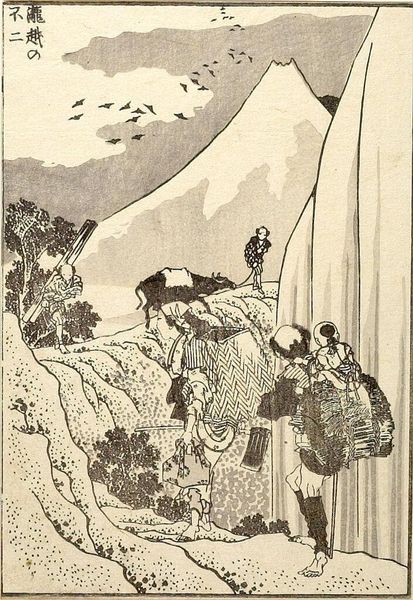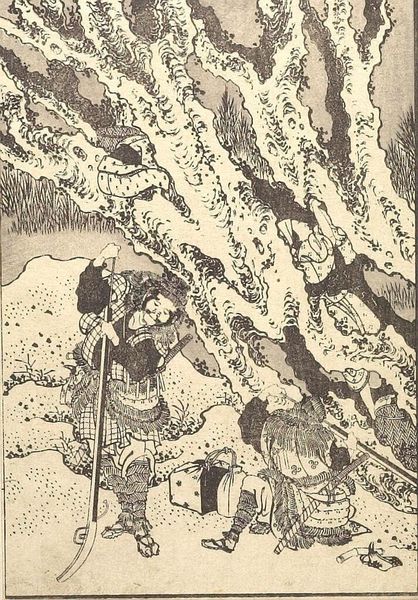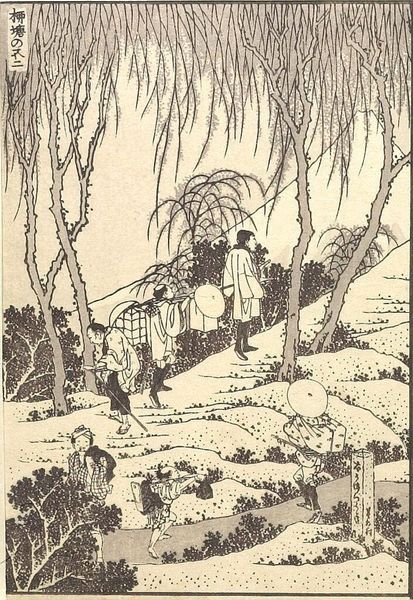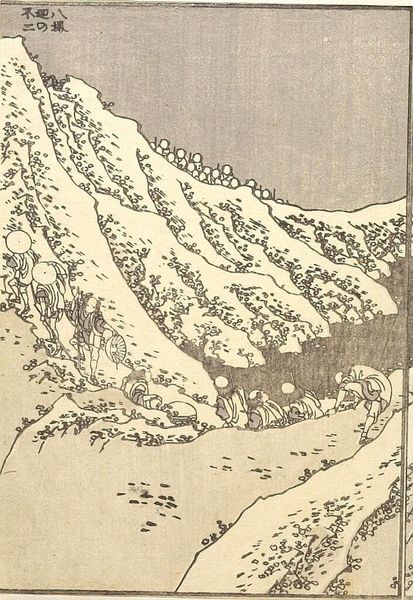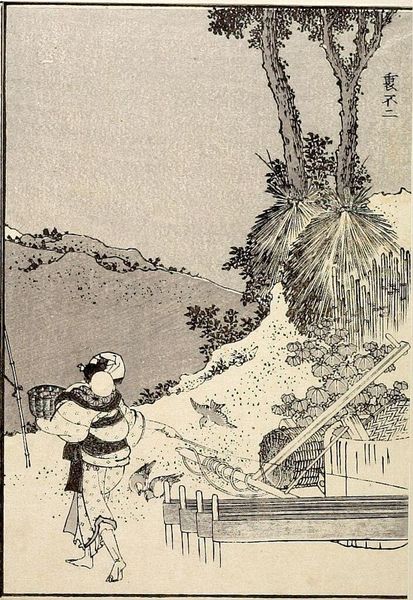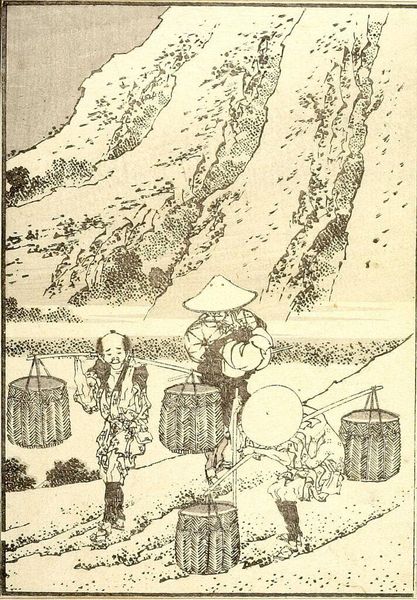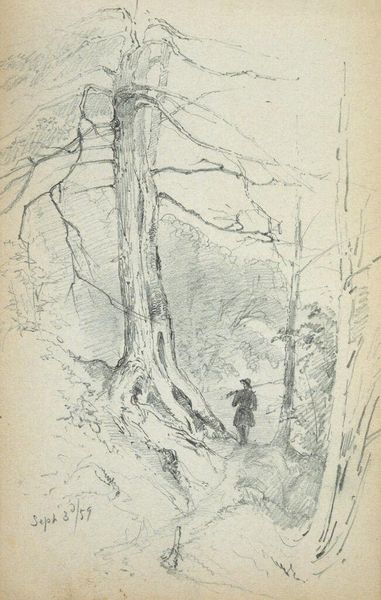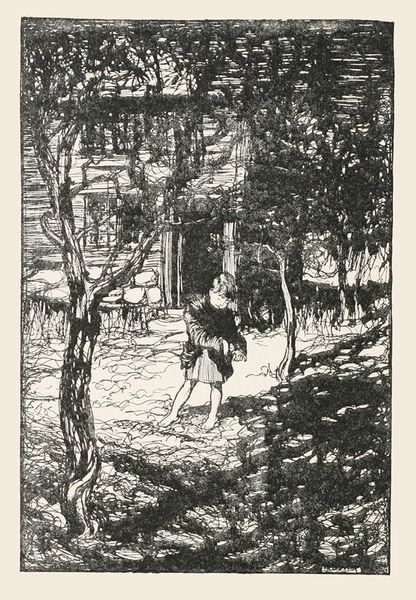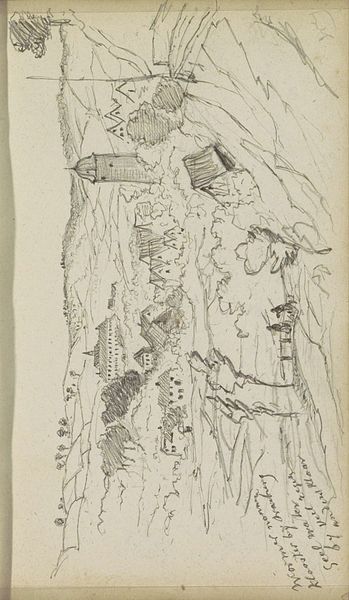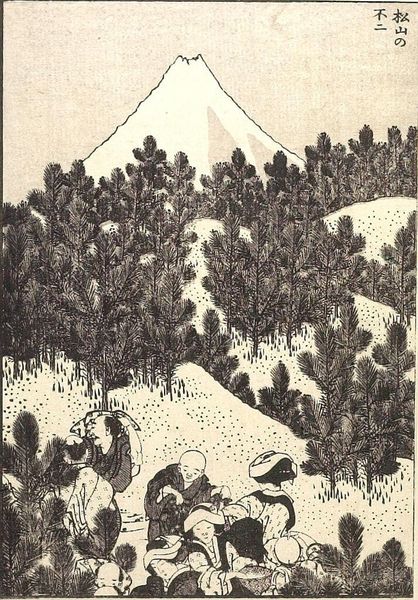
Fuji in the Mountains of Taisekiji Temple (Taisekiji no sanchū no Fuji): Half of detatched page from One Hundred Views of Mount Fuji (Fugaku hyakkei) Vol. 2 Possibly 1835 - 1836
0:00
0:00
Dimensions: Paper: H. 22.8 cm x W. 12.7 cm (9 x 5 in.)
Copyright: CC0 1.0
Curator: Katsushika Hokusai, born in 1760, crafted this print, "Fuji in the Mountains of Taisekiji Temple," a woodblock from his celebrated "One Hundred Views of Mount Fuji" series. Editor: It feels like a journey, doesn’t it? The procession of figures immediately suggests a pilgrimage, burdened with their packs, yet resolute. Curator: Absolutely. The figures, likely pilgrims, are framed by the mountain, emphasizing a symbiotic relationship between humanity, nature, and religious devotion. It's crucial to see this in context. Japan, particularly during Hokusai's time, was experiencing significant socio-economic shifts, leading to a greater emphasis on personal spirituality. Editor: The conical shape atop their heads, combined with Mount Fuji peeking behind them, mirrors sacred geometry. Mount Fuji itself functions as a visual mantra, a symbol of enduring power and spiritual enlightenment. Curator: I see it too. The artist uses Mount Fuji to represent cultural identity, national pride, and individual journeys. It's an interesting intersection of personal and collective experience, filtered through the lens of landscape. Editor: Exactly. It’s as if Hokusai invites us to reflect on our own burdens and ascensions. Curator: A beautiful fusion of art, faith, and social context. Editor: Yes, the symbols pull us into both the details and the broader view of the journey.
Comments
No comments
Be the first to comment and join the conversation on the ultimate creative platform.
